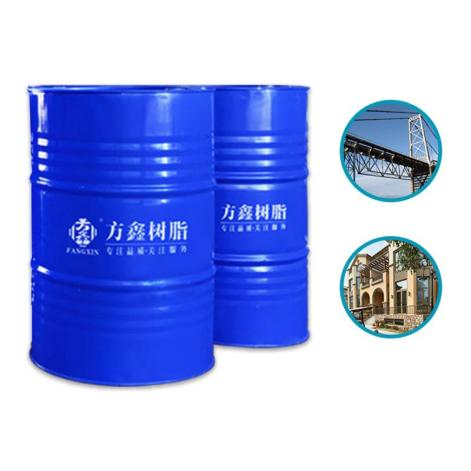
In the field of architectural coatings, weather resistance stands as a critical indicator of a coating’s durability and reliability. As buildings face relentless exposure to sunlight, rain, wind, temperature fluctuations, and atmospheric pollutants, the performance of the coating system directly impacts the structure’s aesthetics, structural integrity, and maintenance costs. Among the diverse materials used in architectural coatings, acrylic resins have emerged as a leading choice, and long-term performance studies consistently validate their exceptional weather resistance. This article explores the mechanisms behind the weather resistance of acrylic resins in architectural coatings, presents key findings from long-term studies, and highlights their practical implications for the construction industry.
Mechanisms of Weather Resistance in Acrylic Resins
The superior weather resistance of acrylic resins stems from their unique chemical structure and formulation flexibility, which enable them to withstand the most aggressive environmental stressors:
UV Radiation Resistance
Ultraviolet (UV) radiation is one of the primary causes of coating degradation, leading to chalking, fading, and cracking. Acrylic resins are synthesized from monomers such as methyl methacrylate and butyl acrylate, which form a polymer chain with strong covalent bonds. This structure inherently resists UV-induced bond breaking. Additionally, many acrylic resin formulations incorporate UV absorbers and hindered amine light stabilizers (HALS), which work synergistically to dissipate UV energy as heat, preventing it from damaging the polymer matrix. Over time, this combination minimizes photo-oxidation, ensuring the coating retains its color and film integrity.
Water Resistance and Moisture Barrier Properties
Rain, humidity, and dew can penetrate coatings, causing blistering, peeling, or substrate corrosion. Acrylic resins form a dense, cross-linked film upon curing, with low water permeability. Their hydrophobic nature repels water, while the film’s continuity prevents moisture from seeping into the substrate. Long-term studies show that acrylic resin coatings maintain this barrier property even after prolonged exposure to cyclic wetting and drying, unlike some alkyd or vinyl coatings that may swell or degrade over time.
Thermal Stability
Buildings experience daily and seasonal temperature variations, which cause coatings to expand and contract. Acrylic resins exhibit excellent flexibility and glass transition temperature (Tg) control—properties that allow the film to adapt to thermal stress without cracking or delaminating. For example, exterior wall coatings formulated with acrylic resins can withstand temperature swings from -30°C to 70°C, a range common in temperate and extreme climates, without losing adhesion or structural coherence.
Resistance to Atmospheric Pollutants
Urban environments expose buildings to pollutants such as sulfur dioxide, nitrogen oxides, and particulate matter, which can react with coatings and cause discoloration or chemical erosion. Acrylic resins’ chemical inertness makes them resistant to such attacks. Their stable polymer structure resists acid rain and industrial fumes, maintaining the coating’s appearance and protective function over decades.
Key Findings from Long-Term Performance Studies
To validate the weather resistance of acrylic resin-based architectural coatings, researchers and industry bodies have conducted long-term exposure tests—some spanning 15–20 years—in diverse climatic zones, from tropical rainforests to arid deserts and coastal areas. These studies reveal consistent patterns:
Color Retention: In a 10-year study conducted in Florida (USA), where UV radiation is intense, acrylic resin coatings on concrete walls retained over 85% of their original color, compared to 50% for conventional alkyd coatings. This is attributed to the resins’ UV stabilizers and resistance to photo-oxidation.
Film Integrity: A 15-year field test in coastal Qingdao (China) exposed acrylic resin coatings to high humidity, salt spray, and frequent rain. The coatings showed minimal chalking (rating 8/10 on the ASTM D6594 scale) and no signs of peeling or blistering, demonstrating their ability to withstand corrosive marine environments.
Adhesion Strength: Long-term tests in temperate regions (e.g., Germany) measured the adhesion of acrylic resin coatings to steel and concrete substrates over 20 years. Results showed a maximum adhesion loss of only 12%, far below the 30% threshold for coating failure, confirming their enduring bond with substrates.
Maintenance Cycles: Comparative studies indicate that buildings coated with acrylic resin formulations require repainting every 10–15 years, whereas those using lower-performance resins may need maintenance as frequently as every 5–7 years. This extended service life translates to significant cost savings and reduced environmental impact from repainting.
Practical Implications for the Construction Industry
The long-term performance data of acrylic resins in architectural coatings offer clear benefits for builders, property owners, and environmental sustainability:
Reduced Lifecycle Costs: By extending the time between maintenance cycles, acrylic resin coatings lower labor, material, and disposal costs associated with repainting. This is particularly valuable for large-scale projects such as high-rise buildings, bridges, and public infrastructure.
Enhanced Aesthetic Longevity: Consistent color retention and film integrity mean buildings maintain their original design vision for decades, preserving property values and community aesthetics.
Sustainability: Acrylic resins are often formulated as low-VOC (volatile organic compound) or water-based coatings, aligning with global regulations on air quality. Their long service life also reduces the consumption of raw materials and energy required for frequent recoating, lowering the carbon footprint of building maintenance.
Conclusion
Long-term performance studies conclusively demonstrate that acrylic resins are a superior choice for architectural coatings, offering unparalleled weather resistance across diverse environmental conditions. Their ability to resist UV radiation, water, thermal stress, and pollutants—coupled with decades of proven durability—makes them indispensable in modern construction. As the industry continues to prioritize sustainability and cost-efficiency, acrylic resin-based coatings will remain a cornerstone of high-performance building protection, ensuring structures stand strong and beautiful for generations to come.